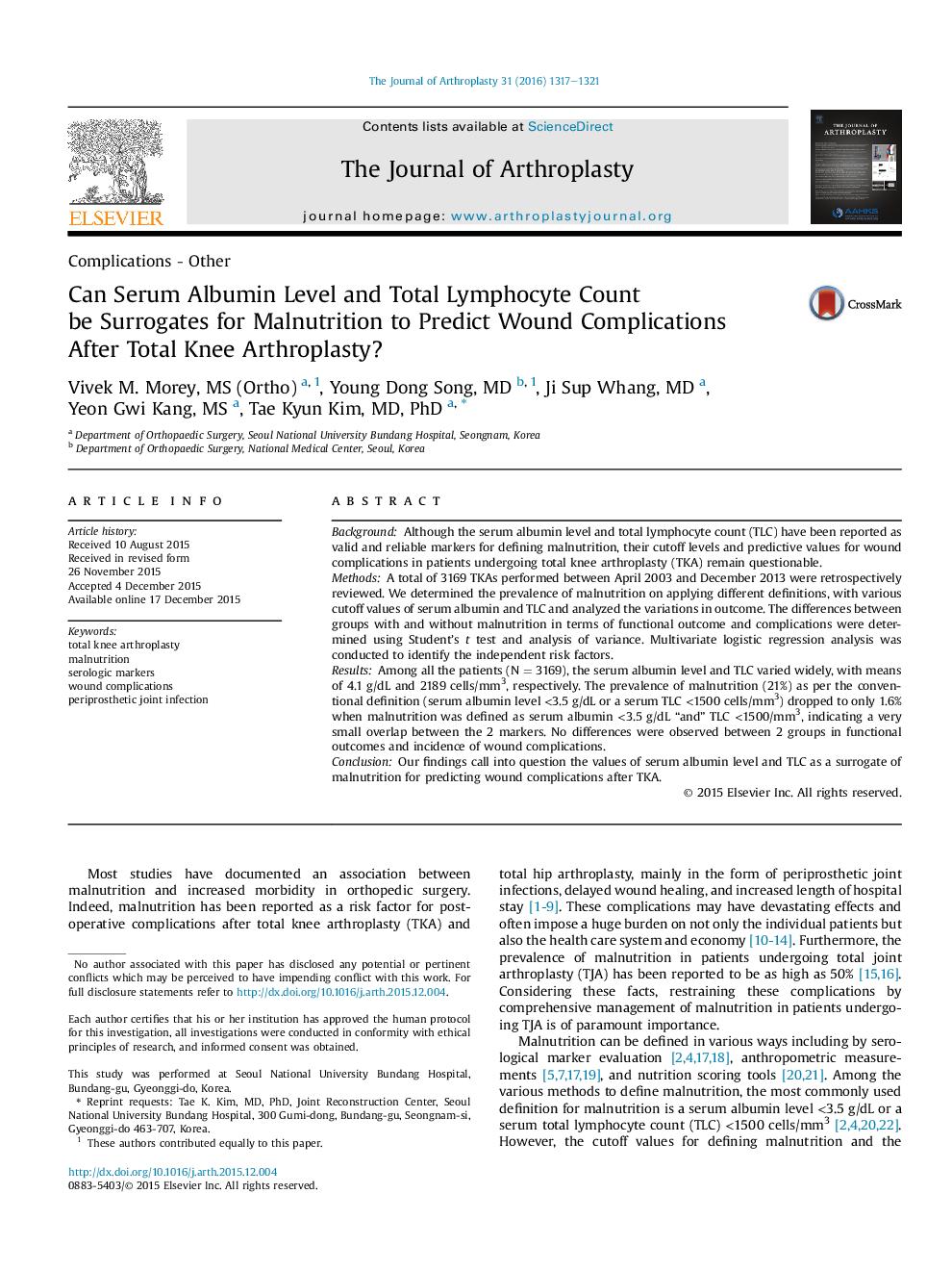| Article ID | Journal | Published Year | Pages | File Type |
|---|---|---|---|---|
| 4059894 | The Journal of Arthroplasty | 2016 | 5 Pages |
BackgroundAlthough the serum albumin level and total lymphocyte count (TLC) have been reported as valid and reliable markers for defining malnutrition, their cutoff levels and predictive values for wound complications in patients undergoing total knee arthroplasty (TKA) remain questionable.MethodsA total of 3169 TKAs performed between April 2003 and December 2013 were retrospectively reviewed. We determined the prevalence of malnutrition on applying different definitions, with various cutoff values of serum albumin and TLC and analyzed the variations in outcome. The differences between groups with and without malnutrition in terms of functional outcome and complications were determined using Student’s t test and analysis of variance. Multivariate logistic regression analysis was conducted to identify the independent risk factors.ResultsAmong all the patients (N = 3169), the serum albumin level and TLC varied widely, with means of 4.1 g/dL and 2189 cells/mm3, respectively. The prevalence of malnutrition (21%) as per the conventional definition (serum albumin level <3.5 g/dL or a serum TLC <1500 cells/mm3) dropped to only 1.6% when malnutrition was defined as serum albumin <3.5 g/dL “and” TLC <1500/mm3, indicating a very small overlap between the 2 markers. No differences were observed between 2 groups in functional outcomes and incidence of wound complications.ConclusionOur findings call into question the values of serum albumin level and TLC as a surrogate of malnutrition for predicting wound complications after TKA.
